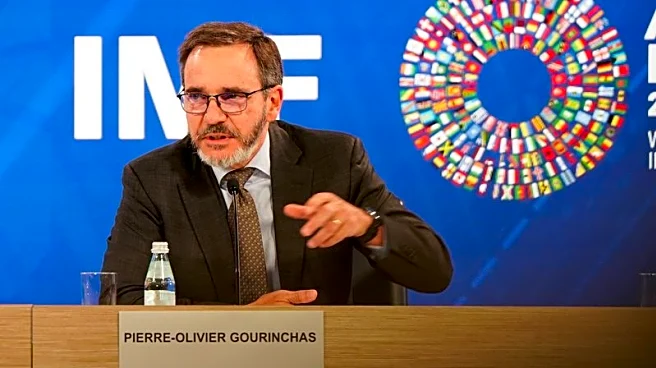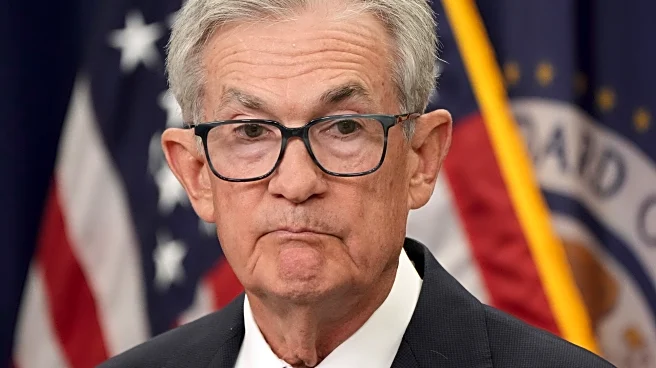What's Happening?
U.S. Treasury yields have decreased, with the 10-year yield dropping below 4% for the first time since April. This decline is attributed to growing concerns over bad regional bank loans, prompting a shift
towards U.S. Treasurys as a safe haven. The financial instability caused by the collapse of auto parts giant First Brands has led to significant losses in regional and other bank stocks. Despite these concerns, Treasury Secretary Scott Bessent has advocated for further interest rate cuts by the Federal Reserve, following a quarter-point rate cut in September. Bessent expects a series of rate cuts, criticizing Fed Chairman Powell for not being aggressive enough in easing monetary policy. The expectation for two more cuts in 2025 is now over 75%.
Why It's Important?
The decline in Treasury yields and the potential for further interest rate cuts have significant implications for the U.S. economy and financial markets. Lower yields can lead to reduced borrowing costs, potentially stimulating economic activity. However, the concerns over regional bank loans highlight vulnerabilities in the banking sector, which could impact financial stability. The advocacy for rate cuts by Treasury Secretary Bessent suggests a shift towards more accommodative monetary policy, which could influence investment strategies and market dynamics. Stakeholders such as investors, banks, and policymakers will need to navigate these changes carefully to mitigate risks and capitalize on opportunities.
What's Next?
As the situation unfolds, the Federal Reserve's response to Treasury Secretary Bessent's call for further rate cuts will be closely watched. The potential for additional rate cuts could influence market expectations and investment strategies. Regional banks may need to reassess their lending practices to address concerns over bad loans. Investors will likely continue to monitor Treasury yields and adjust their portfolios accordingly. The broader economic impact of these developments will depend on how effectively stakeholders manage the risks and opportunities presented by the changing financial landscape.
Beyond the Headlines
The decline in Treasury yields and the advocacy for rate cuts raise questions about the long-term sustainability of current monetary policy. The potential easing of lending standards by regional banks could have ethical and regulatory implications, prompting discussions on the need for stricter oversight. Additionally, the shift towards more accommodative monetary policy may influence cultural attitudes towards borrowing and investment, potentially altering consumer behavior and economic growth patterns.













